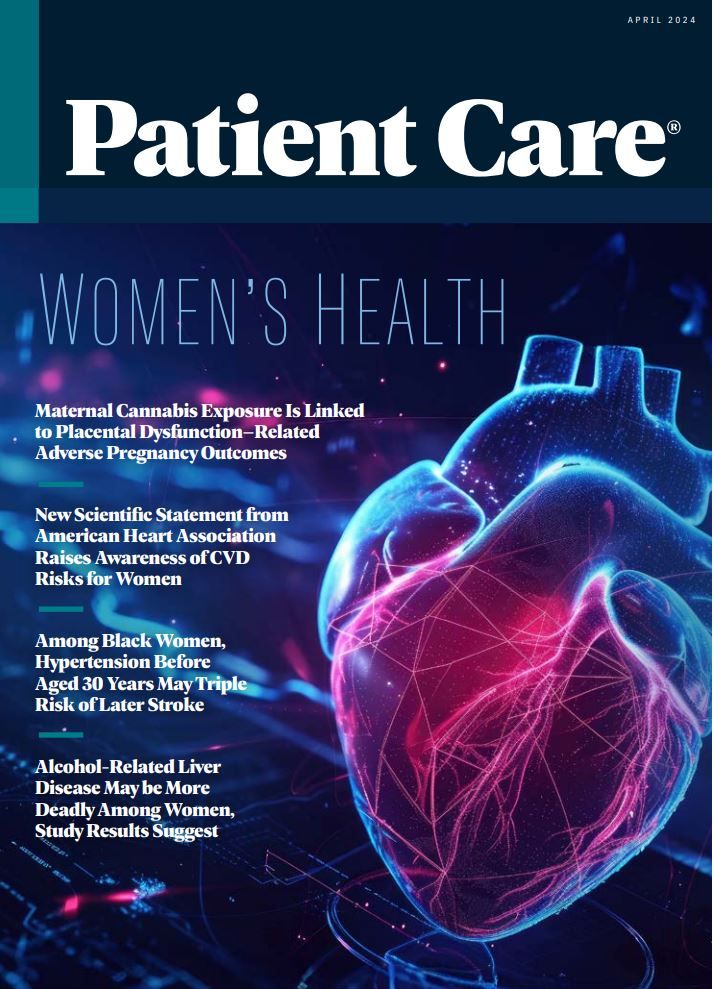- Clinical Technology
- Adult Immunization
- Hepatology
- Pediatric Immunization
- Screening
- Psychiatry
- Allergy
- Women's Health
- Cardiology
- Pediatrics
- Dermatology
- Endocrinology
- Pain Management
- Gastroenterology
- Infectious Disease
- Obesity Medicine
- Rheumatology
- Nephrology
- Neurology
- Pulmonology
New Scientific Statement from American Heart Association Raises Awareness of CVD Risks for Women
Women with adverse pregnancy outcomes face a significantly higher risk of cardiovascular disease and stroke later in life, according to the statement.

A new scientific statement from the American Heart Association (AHA) shows that women with adverse pregnancy outcomes (APOs)—including gestational diabetes, hypertension (HTN), and preterm birth—experience a significantly higher risk of cardiovascular disease (CVD) and stroke later in life.1
The findings are featured in a special Go Red for Women Spotlight issue of Circulation and were published online February 12, 2024.
While APOs are common among pregnant women and women with APOs have a higher incidence of CVD risk factors after delivery, “evidence-based approaches to managing these patients after pregnancy to reduce cardiovascular disease risk are lacking,” wrote researchers.1
In the scientific statement—titled Opportunities in the Postpartum Period to Reduce Cardiovascular Disease Risk After Adverse Pregnancy Outcomes: A Scientific Statement From the American Heart Association—investigators reviewed current evidence on interpregnancy and postpartum preventive strategies, blood pressure (BP) management, and lifestyle interventions for optimizing CVD using the AHA’s Life’s Essential 8 framework.1
“Adverse pregnancy outcomes can be a wake-up call to a young person that they may be at risk for heart disease and stroke later in life. By identifying these women at a younger age, we will be able to act earlier to prevent and treat risk factors and promote healthy lifestyle changes,” said first author and chair of the writing group for the statement, Jennifer Lewey, MD, MPH, in an AHA press release.2
According to the statement, the prevalence of APOs is estimated to be 10%-20% and varies by race and ethnicity.“These APOs portend higher risk of future long-term complications, including increased lifetime risk of atherosclerotic cardiovascular disease (ASCVD), heart failure, stroke, chronic kidney disease (CKD), and vascular dementia,” added Lewey and colleagues in the statement. “This risk appears to be largely mediated by the increased incidence of [CVD] risk factors, including diabetes and [HTN].”1
For example, according to researchers, persons with gestational diabetes are 8-times more likely to develop subsequent type 2 diabetes compared with those without gestational diabetes. Also, women with hypertensive disorders of pregnancy (HDP), such as gestational hypertension and preeclampsia, have a 2- to 4-fold higher risk of developing chronic HTN compared with those with normotensive pregnancies at 10-20 years after delivery.1
“These CVD risk factors, in turn, place postpartum individuals at a higher risk of developing subsequent CVD and other end-organ effects and thus are important targets for postpartum interventions,” wrote researchers.1
Lewey and coauthors stated that disparities by race and ethnicity, socioeconomic status, and geography (ie, rural vs urban communities) also affect the prevalence of APOs and are important contributors to disparities in prenatal CVD risk factors, access to care, and outcomes for both the mother and child.1
“Compared with non-Hispanic White women, non-Hispanic Black women have an increased risk of developing HDP and severe maternal morbidity in the peripartum period and higher CVD risk across their life span,” wrote investigators. In addition, CVD is a leading cause of pregnancy-related deaths and causes the most deaths in Black women who give birth.1
Lewey and colleagues stated that the first year after delivery is an important time to examine long-term CVD risk and implement lifestyle changes and treatment in order to improve cardiovascular health in women and reduce the risk of future pregnancy complications. Specifically, the fourth trimester, defined as the 12 weeks after delivery, is “an optimal time to engaged postpartum individuals in care to reduce maternal morbidity and improve care transitions,” wrote the writing group.1
In addition, strategies that promote cardiovascular health in women who are not pregnant may be successfully adapted in the postpartum period and improve cardiovascular health across their lifetime. Strategies include regular cardiovascular risk factor screening and treatment; ensuring transitions of care among obstetricians, primary care professionals, and the health system; and community-based interventions.1
“Further studies on long-term reduction of CVD risk and implementation of policy-level changes that mitigate the adverse impact of social determinants of health with innovative health care delivery models and value-based care are essential, especially in resource-limited areas,” concluded Lewey et al.1
References:
- Lewey J, Beckie TM, Brown HL, et al. Opportunities in the postpartum period to reduce cardiovascular disease risk after adverse pregnancy outcomes: A scientific statement from the American Heart Association. Circulation. 2024;149:e330-e346. doi:10.1161/CIR.0000000000001212
- Heart disease risk factors in women highlight need for increased awareness, prevention. News release. American Heart Association. Published February 12, 2024. Accessed February 14, 2024. https://newsroom.heart.org/news/heart-disease-risk-factors-in-women-highlight-need-for-increased-awareness-prevention

